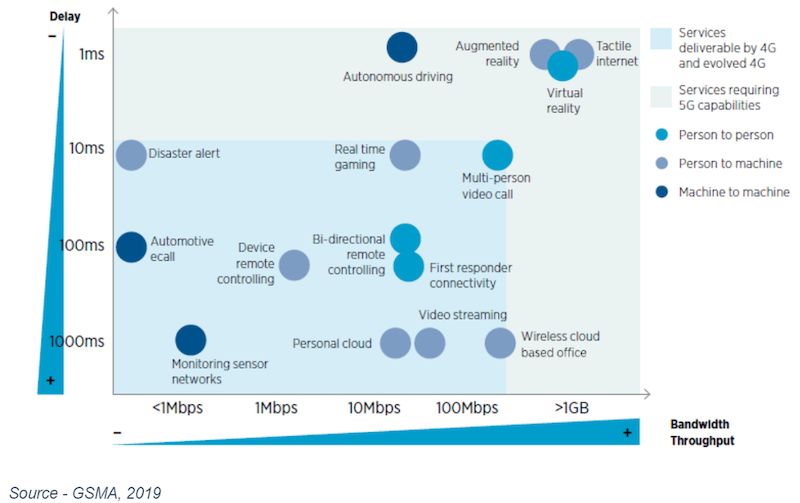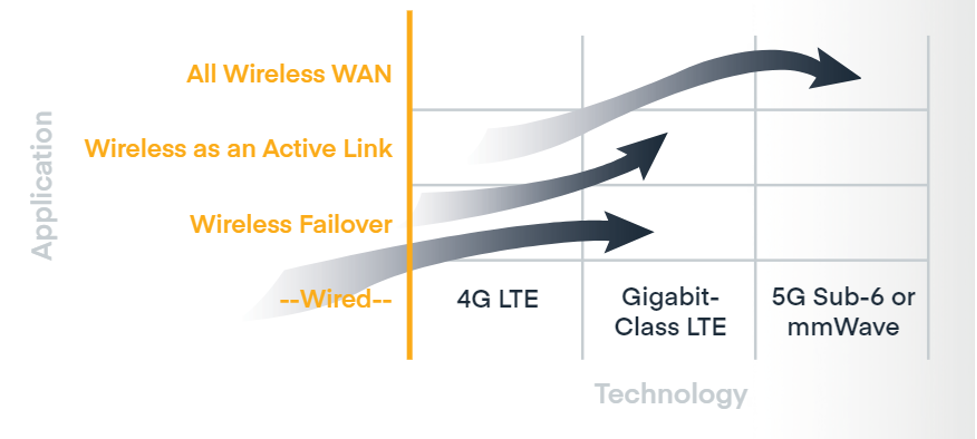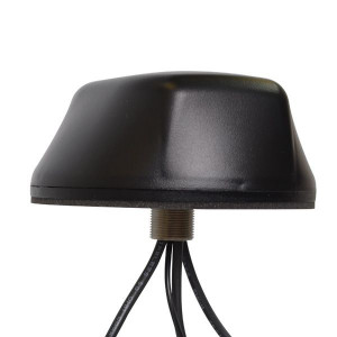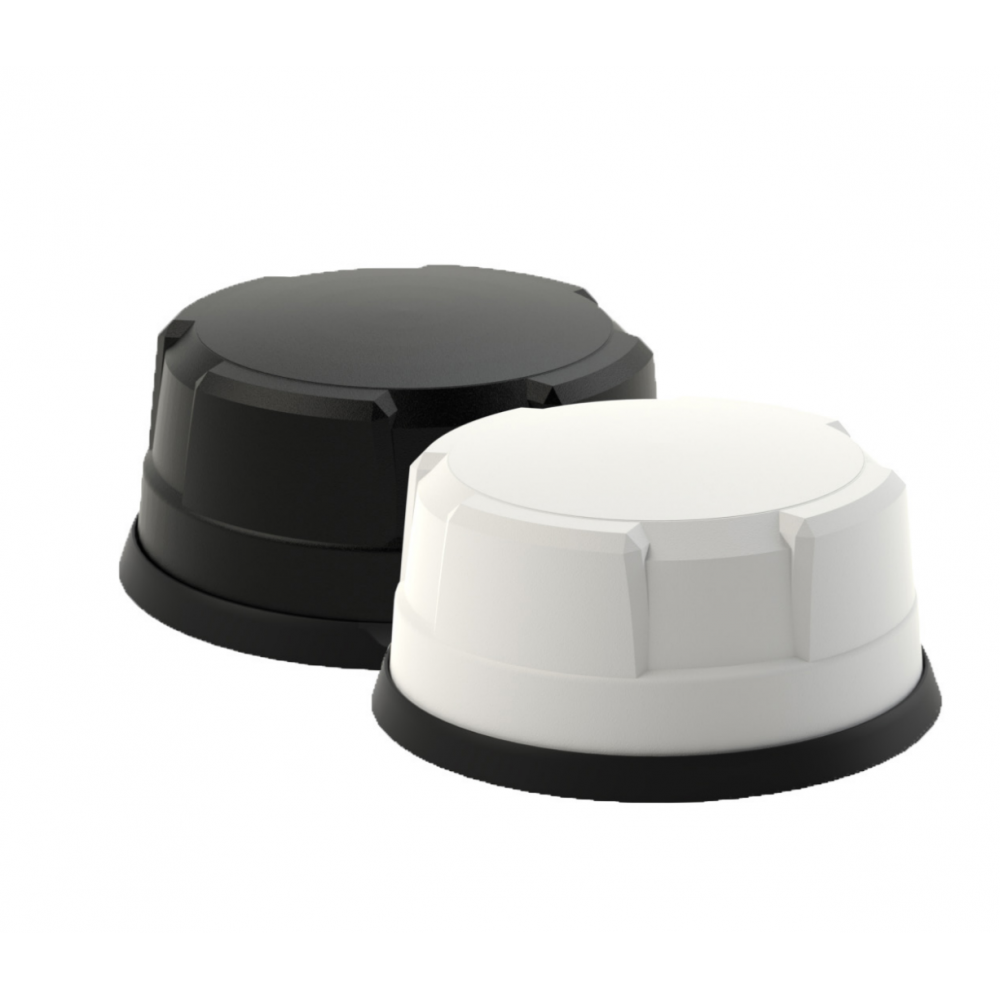5G connection density is not just coming, it is already here. 5G towers and devices have been available for a few years now, and we are rapidly entering the “boom” phase of 5G deployment.
Soon, industrial networks will need to have 5G capability to keep up with data-intense applications. Unfortunately, incorporating 5G is not as simple as replacing the old 4G radios and routers. 5G is a fundamentally new technology, and it will force you to think about network design in new ways.
One of the significant changes coming from 5G is a massive increase in connection density. A single 5G router can handle a magnitude more simultaneous connections than its 4G counterpart. The capabilities are mind-boggling, and it will take network engineers some time to maximize this benefit. Until then, a few best practices can help you think about utilizing and designing around this technology.
Design Around Applications

Network traffic accommodates specific applications and functions. An IoT network won’t support the same data and transmissions as a sports stadium.
You can take that distinction into account when designing a network. The key here is to look at the application throughput of your connection density in 5G, and the application (or applications) that dominates usage will have the highest throughput needs.
You can calculate the average throughput required per device and then multiply it by the number of devices you want your network to support.
It’s easy to determine the number of radios necessary to accommodate the network with this simple calculation. After that, strategizing with 5G becomes a lot easier.
4G coverage will, on average, require 50 times as many radios as 5G devices for the same amount of high-volume traffic. It can be seen by comparing the Cradlepoint E3000 to a comparable 4G router. This high connection density forms the nexus of your 5G design.
In any region where 5G is feasible, you can cut radio investment by more than an order of magnitude by implementing higher-end devices.
Consider Data Rates and Roaming

Network design practices get trickier when you need to accommodate older devices. Many legacy devices can only connect at lower data rates. These rates inherently increase connection time, which drives up total power consumption and network complexity and connection density.
When faster data rates can be achieved, you can lower connection time and effectively expand network capacity. 5G investments open up avenues for utilizing faster data rates, but they are not reverse compatible with many legacy devices. How, then, do you optimize data rates?
The key is to dedicate 4G (or older) access to broad regions that create sufficient coverage for the legacy devices. Because older communications use longer wavelengths, you can cover more area with fewer radios. When you strategically offload as much traffic as you reasonably can to high connection density 5G radios, you remove bottlenecks. The 4G radios are strictly handling the older devices so that most traffic can make full use of the short connection times and advantages.
Account for Wave Propagation
A challenge unique to designing a 5G network is the use of significantly higher frequencies as compared to older wireless signals. Shorter wavelengths mean 5G signals are more easily blocked by walls and physical obstructions.
The general rule is that 5G needs line-of-sight to operate well, making the process of designing network coverage (especially for indoor regions) quite tricky. Signal obstruction and connectivity density can come from many sources and provide a major challenge.
Optimization in this regard stems from putting as many devices as possible in direct line-of-sight of your 5G access points. That might sound easier said than done, but the general idea is to let 4G cover lower-traffic areas with more obstructions.
You can focus 5G coverage on open areas with more devices. The hybridized approach still allows 4G systems to offload bottleneck-generating traffic onto the more capable 5G hardware. It will shore up coverage gaps with lower frequency signals that are harder to obstruct. This connection density approach will allow you to minimize 5G radio investments without compromising the network’s available capacity and capability.
Consider Power Distribution Later
At the heart of 5G network design is the need for more radios. 5G is designed to cover less area with each radio.
While any given 5G hub can handle large volumes of data and devices, covering the same amount of area will require many more antennas and radios per square kilometer when compared to 4G.
This has obvious consequences for the cost of deployment. The 5G connection density performance increases often justify having more networking devices, but some cost analysis will be necessary in that regard. An additional challenge arises when trying to provide power to every 5G antenna. The best practice to design around this challenge is to consider power later in the process.

The other best practices above can help to paint a clear picture of how many devices are needed and where they should be positioned for the desired connectivity density coverage. Once that backbone of network design is determined, power delivery is the next step.
If powering devices according to the original plan is not feasible for any reason, you can redesign around your power needs while having a map that shows how these adjustments will affect your total networking capacity and coverage.
The gist is that it is easier to adjust the network around power limitations than to design around power first and then adjust for better connection density and coverage.
Hybridize the Network
Ultimately, 5G is designed to work in tandem with existing networking technology. It’s not entirely backward compatible with all systems. Still, the best practices listed above assume that 4G and 5G will be interlaced together to optimize the network as a whole.
It doesn’t have to stop there. WiFi, LAN, fiber, and other modes of connectivity can also be integrated into a 5G network to expand options and improve overall efficiency.
For example, 5G high-connection-density hubs blocked by an obstruction could be bridged with a single fiber cable. WiFi can supplement 5G coverage in the same way as 4G radios.
Modern devices are built around compatibility that can utilize all of these signal modes. The best networks will emerge when you make the most of every option.
4G vs. 5G: The Next-Level Network Revolution
The shift from 4G to 5G marks a significant leap in 4G vs. 5G connection density technology. While 4G networks handle around 100,000 devices per square kilometer, 5G can support up to one million.
This dramatic increase means more devices can connect simultaneously without compromising speed or reliability. Businesses, smart cities, and IoT ecosystems will benefit significantly, enabling seamless communication between countless devices.
In contrast, 4G’s limitations can lead to network congestion and slower speeds in densely populated areas. As 5G continues to roll out, its ability to manage exponentially more connections will revolutionize how we interact with technology.
Be Ready for 5G
Upgrading networks to utilize 5G connection density capabilities will take time and effort, and the learning curve will be steep. Best practices can help you think about ways the new technology will lead to better and better networks. Ensure your systems and devices are ready by beginning to shop for supplies like 5G antennas. Westward Sales is made up of experienced IT professionals that are here to help you make this transition. Reach out to us today.

Leave a Reply